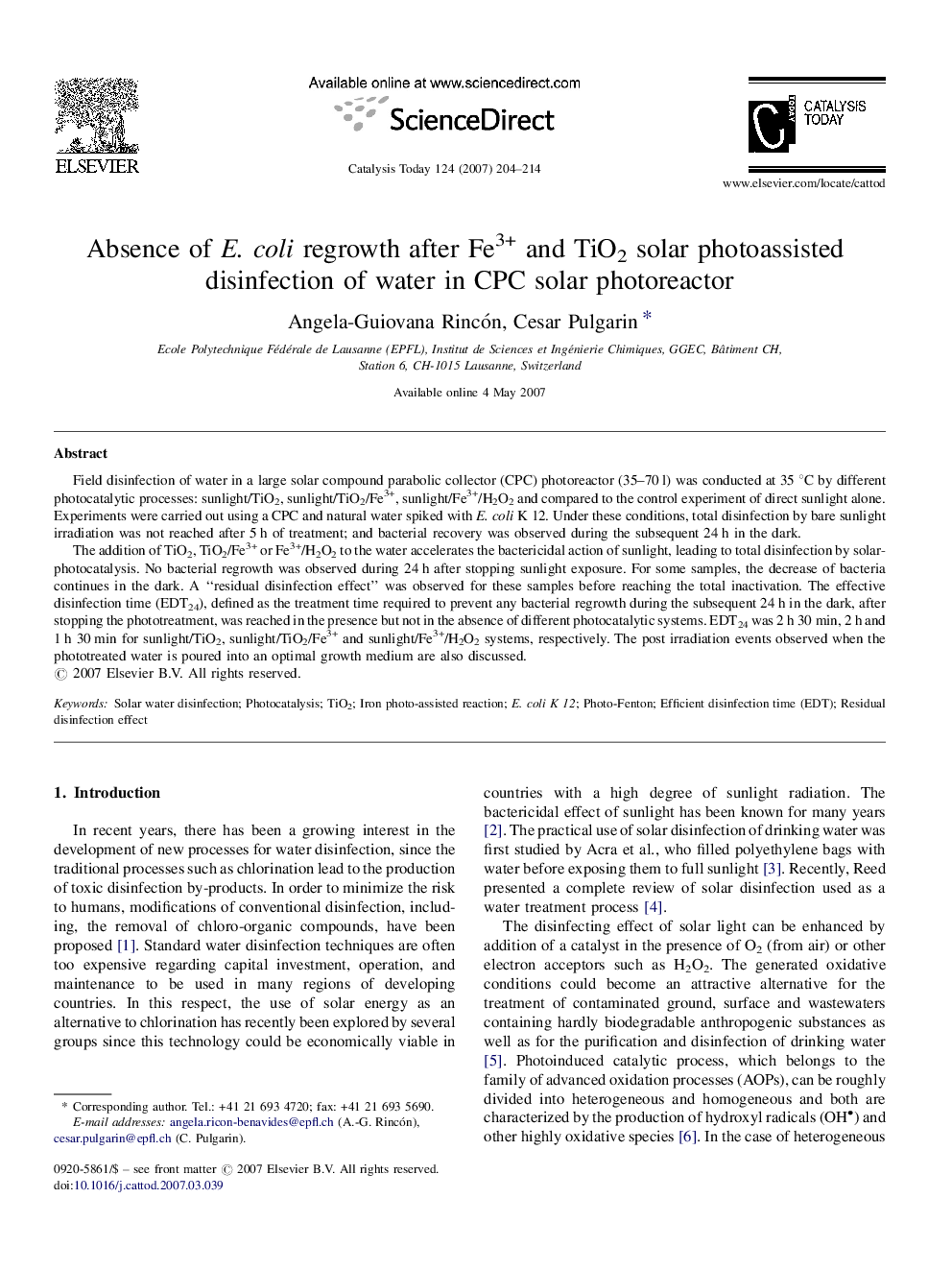| Article ID | Journal | Published Year | Pages | File Type |
|---|---|---|---|---|
| 58123 | Catalysis Today | 2007 | 11 Pages |
Field disinfection of water in a large solar compound parabolic collector (CPC) photoreactor (35–70 l) was conducted at 35 °C by different photocatalytic processes: sunlight/TiO2, sunlight/TiO2/Fe3+, sunlight/Fe3+/H2O2 and compared to the control experiment of direct sunlight alone. Experiments were carried out using a CPC and natural water spiked with E. coli K 12. Under these conditions, total disinfection by bare sunlight irradiation was not reached after 5 h of treatment; and bacterial recovery was observed during the subsequent 24 h in the dark.The addition of TiO2, TiO2/Fe3+ or Fe3+/H2O2 to the water accelerates the bactericidal action of sunlight, leading to total disinfection by solar-photocatalysis. No bacterial regrowth was observed during 24 h after stopping sunlight exposure. For some samples, the decrease of bacteria continues in the dark. A “residual disinfection effect” was observed for these samples before reaching the total inactivation. The effective disinfection time (EDT24), defined as the treatment time required to prevent any bacterial regrowth during the subsequent 24 h in the dark, after stopping the phototreatment, was reached in the presence but not in the absence of different photocatalytic systems. EDT24 was 2 h 30 min, 2 h and 1 h 30 min for sunlight/TiO2, sunlight/TiO2/Fe3+ and sunlight/Fe3+/H2O2 systems, respectively. The post irradiation events observed when the phototreated water is poured into an optimal growth medium are also discussed.
